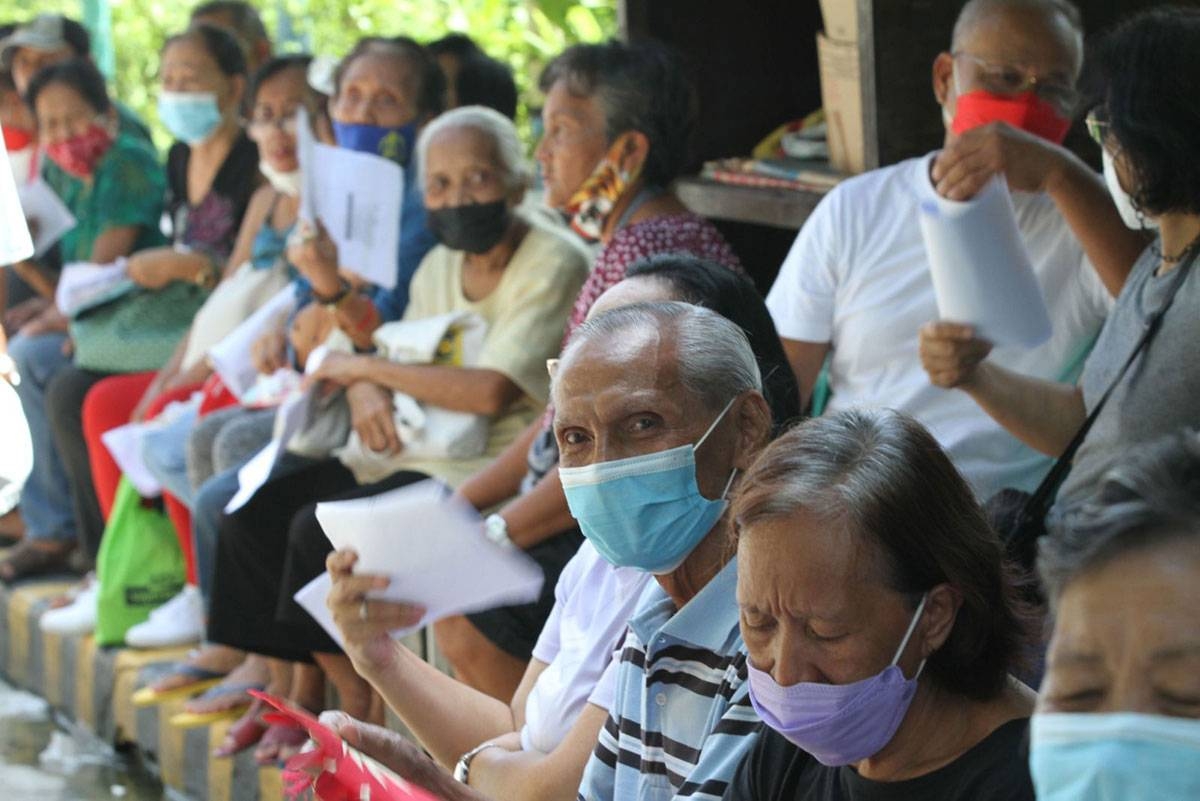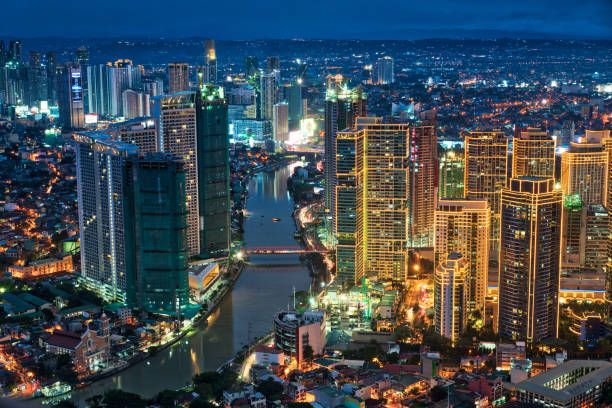Introduction to the Proposed Bill
Deputy Speaker Camille Villar has recently introduced a legislative proposal aimed at enhancing tourism accessibility for senior citizens and persons with disabilities (PWDs) in the Philippines. This proposal, known as House Bill 10349 or the “PWD and Senior Citizen-Friendly Tourism Sites Act,” seeks to address the current accessibility barriers that these groups face when traveling within the country.
The bill underscores the importance of inclusive tourism, ensuring that all individuals, regardless of age or physical ability, have equal opportunities to enjoy the myriad of tourist attractions that the Philippines has to offer. By mandating the implementation of accessible facilities and services, the bill aims to create a more welcoming environment for senior citizens and PWDs, thereby promoting their well-being and social inclusion.
One of the primary objectives of House Bill 10349 is to establish clear guidelines and standards for accessibility in various tourism sites. This includes the development of accessible infrastructure, such as ramps, elevators, and specially designed restrooms, as well as the provision of assistive services like guided tours and transportation. The bill also calls for regular audits and compliance checks to ensure that these standards are consistently met across the tourism sector.
The significance of this legislative proposal cannot be overstated. By fostering a more inclusive tourism landscape, the bill has the potential to significantly boost the participation of senior citizens and PWDs in tourism activities. This, in turn, can lead to increased economic benefits for local communities, as well as the promotion of a more diverse and inclusive society.
In conclusion, the introduction of House Bill 10349 represents a crucial step towards making tourism in the Philippines more accessible and equitable for all. By addressing the specific needs of senior citizens and PWDs, the bill aims to create a more inclusive and enjoyable travel experience for everyone.
Current Barriers in Tourism for PWDs and Senior Citizens
Despite the increasing global recognition of the need for inclusive tourism, significant barriers persist for senior citizens and persons with disabilities (PWDs) in the Philippines. These barriers range from inadequate infrastructure to societal attitudes, each contributing to a less than ideal travel experience for these groups.
One of the primary challenges is the lack of accessible facilities and services. Many tourist destinations in the Philippines lack ramps, elevators, and accessible restrooms, making it difficult for individuals with mobility issues to navigate. Public transportation systems, although improving, often fall short in providing adequate accommodations for those with disabilities. This lack of accessibility extends to hotels and restaurants, where the absence of features like Braille menus, auditory signals, and wheelchair-accessible rooms can significantly hinder the travel experience.
Moreover, discriminatory practices further exacerbate the difficulties faced by PWDs and senior citizens. Instances of service denial or subpar treatment at tourist sites and accommodations are not uncommon. Such practices not only create a sense of exclusion but also deter these individuals from engaging in tourism activities. The lack of staff training in handling the specific needs of disabled individuals and older adults adds to the problem, as employees may not be equipped to provide the necessary support.
These barriers discourage travel not only among PWDs and senior citizens but also among their families or caregivers who may be concerned about the potential difficulties and inconveniences. The fear of encountering inaccessible locations and unaccommodating services can significantly reduce the willingness of these groups to explore and enjoy tourist destinations within the Philippines.
Addressing these challenges is crucial for fostering an inclusive tourism environment. Enhancing accessibility and eliminating discriminatory practices will not only benefit PWDs and senior citizens but also contribute to a more diverse and welcoming tourism industry in the Philippines.
Defining Accessible Tourism
Accessible tourism is a vital concept that ensures all individuals, regardless of physical limitations, disabilities, or age, can enjoy travel experiences equally. The goal of accessible tourism is to create an inclusive environment where everyone can participate in and enjoy tourism activities without facing barriers. This involves designing and implementing tourist destinations, products, and services that cater to the diverse needs of senior citizens and persons with disabilities (PWDs).
In practical terms, accessible tourism encompasses a range of considerations, from the physical accessibility of buildings and public spaces to the availability of information in accessible formats. It requires that transportation options, accommodation facilities, and tourist attractions be designed with inclusivity in mind. For example, ramps, elevators, and accessible restrooms should be standard features in public places. Additionally, providing detailed information about accessibility features and services ensures that travelers can plan their trips with confidence.
The importance of accessible tourism extends beyond individual convenience; it also promotes social inclusion and economic benefits. By making tourism more accessible, destinations can attract a broader range of visitors, including those who might otherwise face challenges in traveling. This inclusivity not only improves the quality of life for individuals with disabilities and senior citizens but also supports the tourism industry by tapping into a previously underserved market segment.
Moreover, accessible tourism fosters a culture of equality and respect. It underscores the principle that everyone has the right to travel and experience the world, regardless of their physical abilities. By prioritizing accessibility, tourism providers contribute to a more just and equitable society, where the joy of travel is a shared experience for all. Therefore, the commitment to accessible tourism is a crucial step towards achieving sustainable and inclusive growth in the tourism sector.
Globally, accessibility has become a critical consideration in fostering inclusive societies. This is particularly true for senior citizens and persons with disabilities (PWDs), who often face significant mobility challenges. The United Nations Convention on the Rights of Persons with Disabilities (CRPD) plays a pivotal role in shaping how nations address these issues. As a signatory to the CRPD, the Philippines is committed to upholding the rights of PWDs and ensuring their full participation in all aspects of life, including tourism.
The CRPD mandates that member states adopt measures to eliminate barriers and promote accessibility in public spaces, services, and facilities. For the Philippines, this has translated into a series of national laws and policies aimed at improving accessibility for PWDs and senior citizens. Notable among these is the Magna Carta for Disabled Persons, which outlines the rights and privileges of PWDs and stipulates the need for barrier-free environments. Additionally, the Implementing Rules and Regulations of Republic Act No. 10070 require local government units to establish Persons with Disabilities Affairs Offices (PDAOs) to ensure that the needs of PWDs are adequately addressed.
Moreover, the growing importance of accessibility resonates with broader demographic trends. The global population is aging, and the number of senior citizens is increasing rapidly. In the Philippines, the elderly population is expected to rise significantly in the coming decades. This demographic shift underscores the necessity of creating accessible tourism infrastructure that caters to the needs of older adults alongside PWDs. Such efforts not only align with human rights imperatives but also present economic opportunities. Accessible tourism can attract a broader range of visitors, thereby boosting the tourism sector and contributing to sustainable development.
In summary, the global and local contexts highlight the importance of accessibility in tourism. The Philippines’ adherence to international conventions and the implementation of supportive national legislation reflect a commitment to creating an inclusive environment for senior citizens and PWDs. Moving forward, continuous efforts are essential to ensure that these commitments translate into practical and tangible improvements in accessibility within the tourism industry.
Components of the Proposed Bill
House Bill 10349 aims to significantly improve tourism accessibility for senior citizens and persons with disabilities (PWDs) in the Philippines through a collaborative approach involving various government departments. The bill mandates the Department of Tourism (DOT) to spearhead initiatives ensuring that tourist sites are inclusive and accessible. This involves the implementation of comprehensive guidelines and standards that cater to the needs of these populations.
One of the critical components of the bill is the integration of accessible infrastructure across all tourist sites. The Department of Public Works and Highways (DPWH) is tasked with constructing and maintaining ramps, elevators, and accessible toilets. These modifications are essential for providing ease of movement and enhancing the overall travel experience of senior citizens and PWDs. The infrastructure provisions also extend to the installation of information desks that are easily reachable and provide necessary assistance and information.
The bill also emphasizes the importance of training and capacity-building programs for tourism and hospitality staff. The DOT will collaborate with relevant agencies to educate personnel on the specific needs of senior citizens and PWDs, ensuring a welcoming and accommodating environment. Through well-structured training sessions, staff will be better equipped to offer tailored services and support.
Moreover, the proposed legislation calls for the development of accessible transportation options. The DOT and the Department of Transportation (DOTr) will work together to ensure that public transport systems, including buses and shuttle services, are designed or retrofitted to accommodate wheelchairs and other mobility aids. This measure aims to facilitate seamless travel from one tourist site to another.
Finally, House Bill 10349 outlines the importance of regular monitoring and evaluation. The DOT will be responsible for conducting periodic assessments to ensure compliance with accessibility standards. Regular audits and feedback mechanisms will help identify gaps and areas for improvement, fostering a culture of continuous enhancement in tourism accessibility.
“`html
Proposed Accessible Infrastructure and Facilities
The bill proposes a comprehensive range of accessible infrastructure and facilities to ensure that senior citizens and persons with disabilities (PWDs) can fully participate in tourism activities in the Philippines. Key among these is the implementation of accessible signage that is clearly visible, easy to read, and strategically placed to guide visitors effectively. These signs will employ large fonts, high contrast colors, and Braille for visually impaired individuals.
Entrances to buildings and tourist attractions will be redesigned to ensure ease of access. This includes wider doorways and automated doors to provide a seamless entry experience for all visitors. Corridors and pathways will also be widened and kept free of obstructions, allowing individuals using wheelchairs or mobility aids to navigate comfortably.
Another crucial aspect is the provision of accessible toilets equipped with grab bars, non-slip floors, and sufficient space for maneuvering. These facilities are essential for maintaining the dignity and independence of senior citizens and PWDs. Additionally, ramps with appropriate gradients will be installed alongside stairways, ensuring that no part of a tourist site is off-limits due to physical barriers. Elevators with audio and visual indicators will also be installed in multi-story buildings to facilitate easy movement between floors.
Emergency exits will be enhanced to accommodate the needs of all visitors, including those with mobility challenges. This includes the installation of tactile and audible warning systems, as well as clearly marked and unobstructed escape routes. Outdoor facilities, such as roads and footpaths leading to tourist destinations, will be designed or modified to be wheelchair-friendly, ensuring safe and convenient access from public transportation points to the attractions themselves.
These proposed infrastructure improvements aim to create a more inclusive environment, promoting equal opportunities for enjoyment and participation in the rich cultural and natural heritage that the Philippines has to offer.
“`
Incorporation of Accessible Activities in Tourism Policies
The Department of Tourism (DOT) in the Philippines is increasingly recognizing the need for inclusive tourism activities that cater to senior citizens and persons with disabilities (PWDs). To ensure that tourism policies, programs, and plans are comprehensive, it is crucial to integrate accessible activities that can be enjoyed by everyone, regardless of their physical limitations or age. This approach not only promotes social inclusion but also enhances the overall tourism experience for a significant segment of the population.
Accessible activities are essential in making tourist destinations welcoming to all. These activities should be thoughtfully designed to accommodate the varied needs of senior citizens and PWDs. For instance, guided tours with sign language interpreters, wheelchair-friendly pathways, and sensory-friendly experiences can significantly improve access and enjoyment for these groups. Such initiatives ensure that the tourism sector becomes more inclusive, reflecting a commitment to equality and respect for all visitors.
Moreover, incorporating accessible activities into tourism policies can have tangible economic benefits. By broadening the target market to include seniors and PWDs, the tourism industry can tap into a larger, often overlooked demographic. This inclusivity can lead to increased visitor numbers, longer stays, and higher overall spending, benefiting local economies and fostering sustainable tourism growth.
The inclusion of accessible activities within tourism policies also aligns with global best practices and international standards. It demonstrates the Philippines’ commitment to upholding the rights of all individuals to participate in leisure and tourism activities. By embedding accessibility into the core of tourism planning and policy-making, the DOT can set a precedent for other sectors and regions to follow, ultimately promoting a culture of inclusivity and respect.
In conclusion, the integration of accessible activities into tourism policies is a vital step toward creating an inclusive tourism landscape in the Philippines. By ensuring that all individuals, regardless of age or physical ability, can fully participate in and enjoy tourism activities, the DOT can foster a more welcoming and equitable environment for all tourists.
Development and Maintenance of Accessible Tourism Sites
The Department of Tourism (DOT) of the Philippines is committed to creating a more inclusive tourism landscape by developing and maintaining accessible tourism sites for senior citizens and persons with disabilities (PWDs). This initiative is part of a broader strategy to ensure that everyone, regardless of physical limitations, can enjoy the diverse attractions the country has to offer. The DOT’s responsibilities in this regard are multifaceted, involving the preparation of a comprehensive development plan that addresses both the construction and installation of necessary facilities, as well as their ongoing maintenance.
Firstly, the development plan focuses on the construction of essential infrastructure that caters to the needs of PWDs and the elderly. This includes the installation of ramps, elevators, tactile paving, and accessible restrooms. Such facilities are crucial for removing barriers and providing a seamless travel experience. Additionally, the plan emphasizes the importance of clear and accessible signage, ensuring that information is readily available to all visitors.
Maintenance of these facilities is equally important. Regular inspections and timely repairs are necessary to keep the infrastructure in optimal condition. The DOT is tasked with implementing a systematic maintenance schedule to address wear and tear, ensuring that accessibility features remain functional and safe. This proactive approach prevents the deterioration of facilities, which could otherwise hinder the mobility and comfort of senior citizens and PWDs.
Moreover, the DOT advocates for the adoption of universal design principles in all new tourism developments. This approach ensures that accessibility features are integrated from the outset, rather than being retrofitted later. Universal design benefits everyone, making tourism sites more user-friendly for a wider audience.
Collaborating with local government units and private sector stakeholders is also a key aspect of the DOT’s strategy. Joint efforts are essential for the successful implementation and sustainability of accessible tourism initiatives. By working together, these entities can pool resources, share expertise, and foster a culture of inclusivity within the tourism industry.
In conclusion, the development and maintenance of accessible tourism sites in the Philippines are crucial steps towards creating an inclusive environment for all visitors. The DOT’s comprehensive approach, encompassing construction, installation, and ongoing maintenance, ensures that senior citizens and PWDs can explore and enjoy the country’s rich tourism offerings with ease and dignity.







